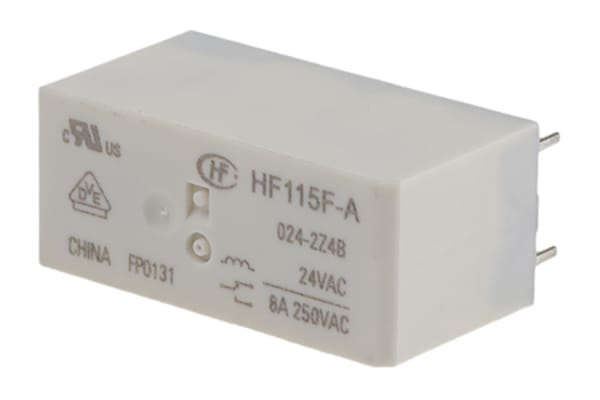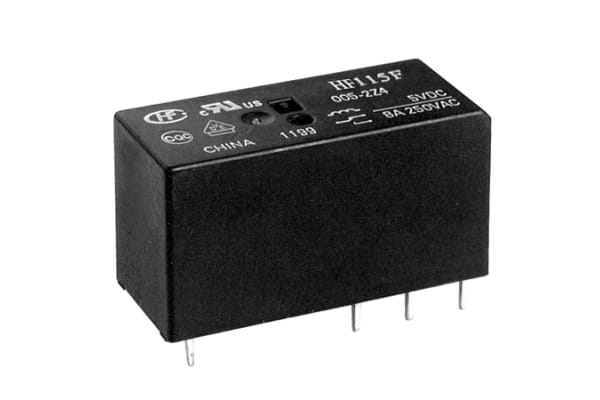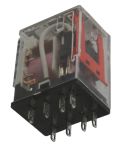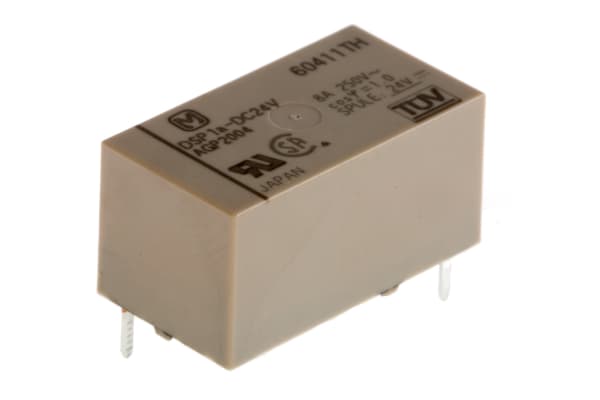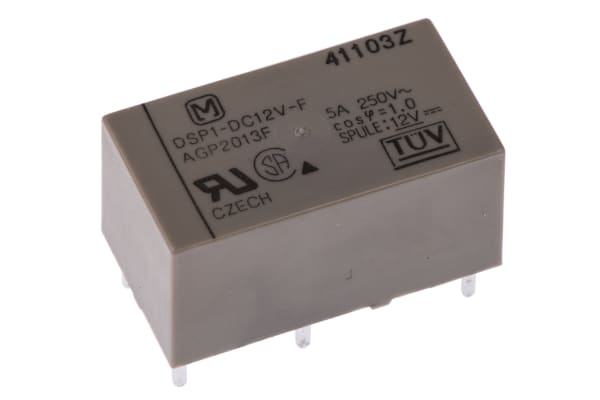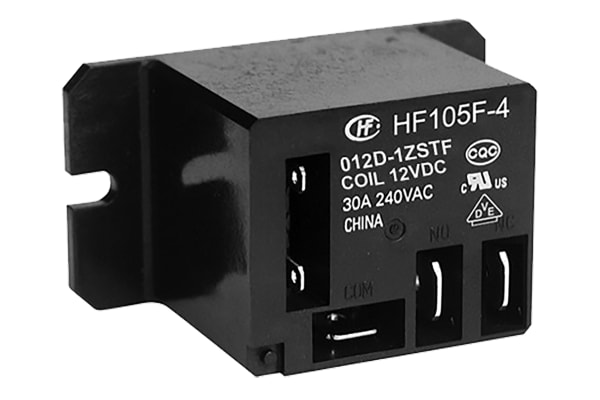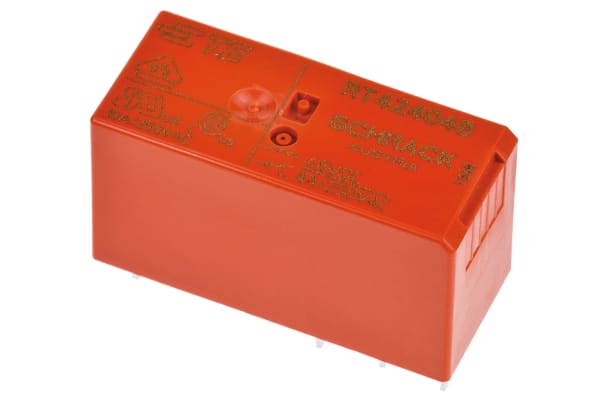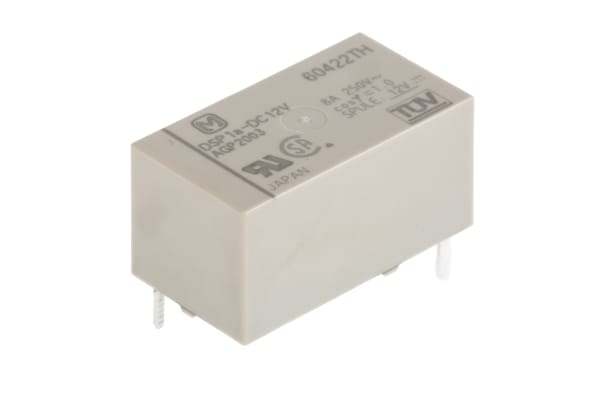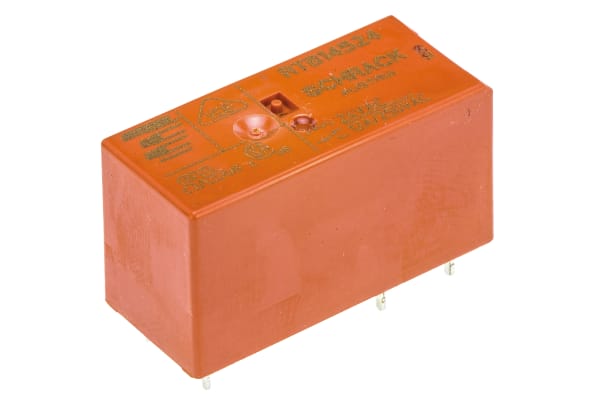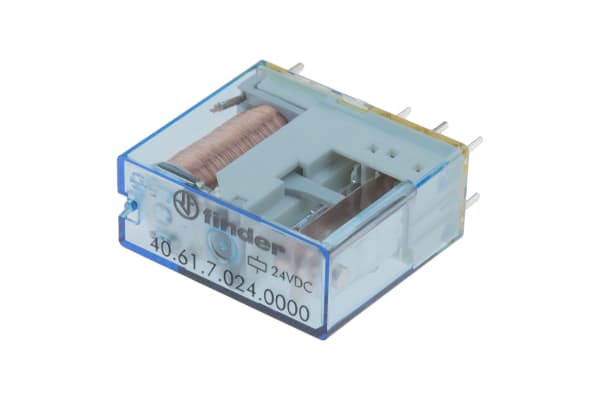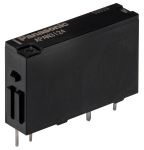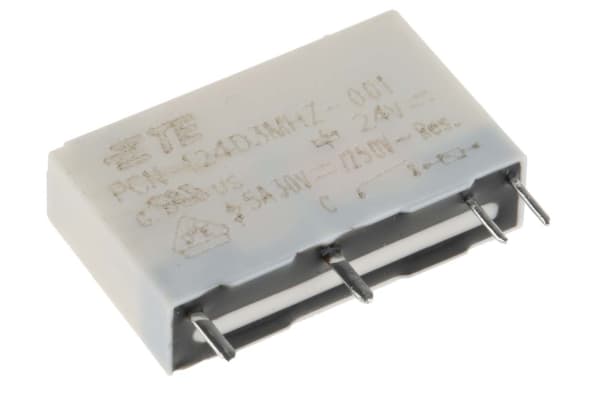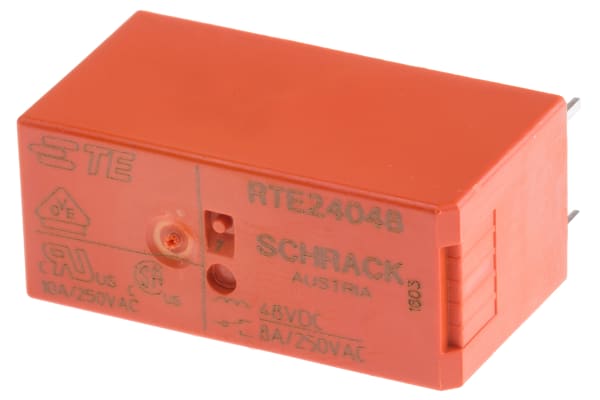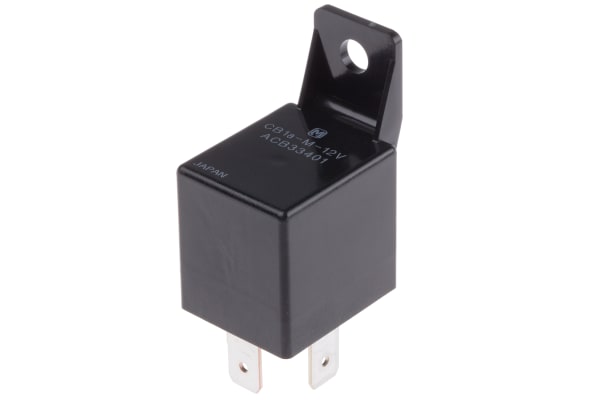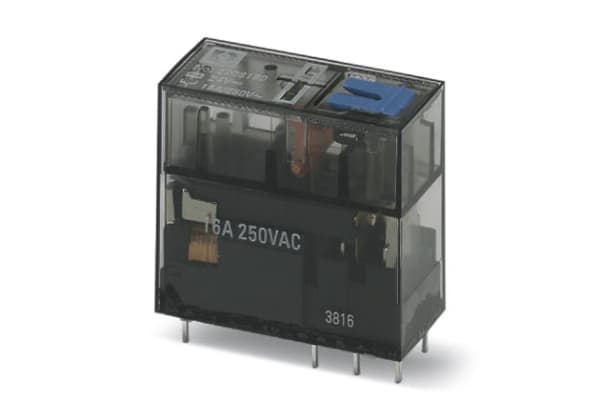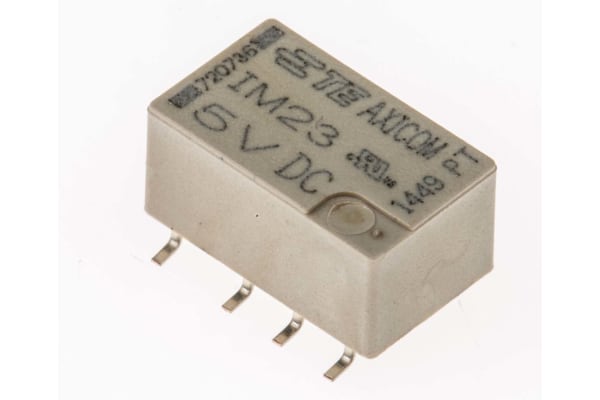Non-Latching Relays
Relays are electrical switches that are operated by electrical impulses with the primary function to open and close a circuit, they can also be referred to as industrial switches. There are 2 main types available, latching and non–latching relays.How do non-latching relays work?Non-latching relays are in a normally closed (NC) position and will stay in this state without power. When power passes through the circuit, the relay switched to a normally open (NO) position by using an internal coil to generate a magnetic force, holding this NO position. Once the current is turned off, it returns to the NC position. This makes non-latching relays well suited to push-button applications like keyboards and micro-controller input buttons.What are non-latching relays used for?Non-latching relays are highly durable and versatile components, making their performance long lasting and suitable for use in a wide range of applications, such as:Automotive enginesHousehold appliancesIndustrial machineryMedical equipmentTelecommunications equipmentWhat is the difference between latching and non-latching relays?Both types of relays in similar in design and function, however, a significant difference between them is that a latching relay will remain in the last position it when it was last powered, whereas a non-latching goes back to its normal position. This makes each more type of relay suitable for different applications. Considerations when selecting a relayWhen choosing a relay, it is important to consider a number of specifications to ensure it is fit for purpose, some factors include:Coil voltage – the required voltage to actuate the switching mechanism. If a voltage is too high this could damage the components, if it is too low then it will not actuate. Contact configuration – This is the state the contacts are in without power. For example SPST, single pole single throw.Contact material – the relay contacts are available in many materials that have certain properties. Common materials are gold, silver, tin oxide and nickel Coil power – the amount of power (watts) the coil operates at. This must match the power in the circuit for correct function. Coil resistance – the amount of resistance (ohms) in the circuit that the coil creates.
-
RS PRO, 24V ac Coil Non-Latching Relay DPDT, 8A Switching Current PCB Mount, 2 Pole
IDR92,198.31 -
Hongfa Europe GMBH, 12V dc Coil Non-Latching Relay DPDT, 8A Switching Current PCB Mount, 2 Pole, HF115F/012-2ZS4BF(610)
IDR79,821.29Pack (1 Pack of 2) -
Omron, 110V dc Coil Non-Latching Relay DPDT, 5A Switching Current Plug In, 2 Pole, MY2DC100110S
IDR80,450.63 -
TE Connectivity, 24V dc Coil Non-Latching Relay SPNO, 16A Switching Current PCB Mount Single Pole, RTS3L024
IDR86,639.14 -
Panasonic, 24V dc Coil Non-Latching Relay SPNO, 5A Switching Current PCB Mount Single Pole, DSP1A-DC24V
IDR75,311.02 -
Panasonic DPST Non-Latching Relay PCB Mount, 12V dc Coil, 5 A
IDR95,240.12 -
Hongfa Europe GMBH, 12V dc Coil Non-Latching Relay SPDT, 20A Switching Current Flange Mount Single Pole,
IDR86,429.36 -
TE Connectivity, 5V dc Coil Non-Latching Relay SPNO, 3A Switching Current PCB Mount Single Pole, PCN-105D3MHZ
IDR74,996.35 -
TE Connectivity, 48V dc Coil Non-Latching Relay DPDT, 8A Switching Current PCB Mount, 2 Pole, RT424048
IDR77,933.27 -
Omron, 3V dc Coil Non-Latching Relay SPDT, 3A Switching Current PCB Mount Single Pole, G6E134PSTUSDC3
IDR58,004.17 -
-15.30%
Schneider Electric, 230V ac Coil Non-Latching Relay SPDT, 10A Switching Current Plug In Single Pole, RXG15P7
IDR125,763.11IDR82,548.43 -
TE Connectivity, 12V dc Coil Non-Latching Relay SPDT, 20A Switching Current PCB Mount Single Pole, T9AS5D12-12
IDR77,723.49 -
Panasonic, 12V dc Coil Non-Latching Relay SPNO, 5A Switching Current PCB Mount Single Pole, DSP1A-DC12V
IDR140,657.49 -
TE Connectivity, 24V ac Coil Non-Latching Relay SPDT, 12A Switching Current PCB Mount Single Pole, RTB14524
IDR65,241.58 -
Finder, 24V dc Coil Non-Latching Relay SPDT, 16A Switching Current PCB Mount Single Pole, 40.61.7.024.0000
IDR99,750.39 -
Panasonic, 24V dc Coil Non-Latching Relay SPNO, 5A Switching Current PCB Mount Single Pole, APAN3124
IDR77,513.71 -
TE Connectivity, 24V dc Coil Non-Latching Relay SPNO, 5A Switching Current PCB Mount Single Pole, 7-1461491-6
IDR102,687.31 -
TE Connectivity, 48V dc Coil Non-Latching Relay DPDT, 8A Switching Current PCB Mount, 2 Pole, RTE24048
IDR59,787.30 -
Panasonic, 12V dc Coil Automotive Relay SPNO, 40A Switching Current Flange Mount Single Pole, CB1A-M-12V
IDR68,388.28 -
RS PRO, 12V dc Coil Non-Latching Relay SPNO, 25A Switching Current PCB Mount Single Pole
IDR86,429.36 -
Phoenix Contact, 24V dc Coil Non-Latching Relay SPDT, 10mA Switching Current Single Pole, 2908180
IDR93,561.88 -
RS PRO, 115V ac Coil Non-Latching Relay 3PDT, 10A Switching Current Plug In, 3 Pole
IDR65,556.25 -
TE Connectivity, 5V dc Coil Non-Latching Relay DPDT, 2A Switching Current PCB Mount, 2 Pole, IM23GR 2-1462039-9
IDR90,729.85 -
Panasonic, 24V dc Coil Automotive Relay SPDT, 20A Switching Current PCB Mount Single Pole, CB1-M-24V
IDR89,576.06



